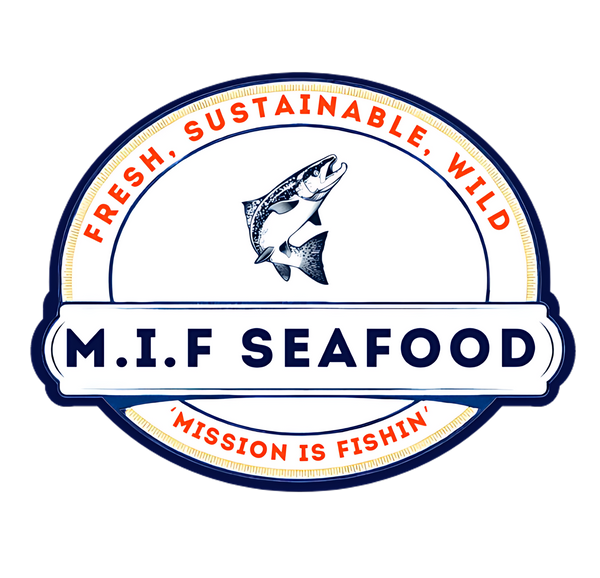In today's world of abundant food choices and ever-evolving dietary trends, it's important to consider not just what we eat, but where it comes from and how it's harvested. When it comes to seafood, the choice between wild-caught and farmed varieties can have significant implications for our health, the environment, and the well-being of coastal communities. In this blog post, we'll delve into the reasons why choosing wild-caught seafood is not only a delicious choice but also a sustainable and responsible one.
---
Superior Flavor and Texture
Natural Environment: Wild-caught seafood thrives in its natural habitat, where it feeds on a diverse diet of marine organisms and develops its unique flavor profile. This results in seafood that is fresher, tastier, and more flavorful compared to its farmed counterparts, which may be raised in artificial environments and fed commercial diets.
Variety of Species: Wild-caught seafood encompasses a wide variety of species, each with its own distinct taste and texture. From delicate halibut and succulent salmon to sweet scallops and briny oysters, choosing wild-caught allows you to explore the rich diversity of flavors that the ocean has to offer.
Health Benefits
Nutrient-Rich: Wild-caught seafood is packed with essential nutrients, including omega-3 fatty acids, protein, vitamins, and minerals. These nutrients play a crucial role in supporting heart health, brain function, and overall well-being, making seafood an important component of a healthy diet.
Lower Contaminant Levels: Wild-caught seafood often contains lower levels of contaminants, such as antibiotics, hormones, and pollutants, compared to farmed varieties. This is because wild-caught fish are less likely to be exposed to these substances, resulting in cleaner and safer seafood for consumption.
Environmental Sustainability
Preservation of Marine Ecosystems: Sustainable harvesting practices ensure that wild-caught seafood is harvested in a manner that maintains the health and resilience of marine ecosystems. By avoiding overfishing, minimizing bycatch, and protecting critical habitats, responsible fishermen help preserve the delicate balance of ocean ecosystems for future generations to enjoy.
Reduced Environmental Impact: Compared to intensive aquaculture operations, wild-caught seafood production has a lower environmental footprint in terms of water usage, energy consumption, and waste generation. Choosing wild-caught seafood supports a more sustainable and eco-friendly approach to food production that prioritizes environmental conservation.
Support for Coastal Communities
Economic Viability: Wild-caught seafood is a vital source of income and livelihood for coastal communities around the world. By supporting local fishermen and sustainable harvesting practices, consumers help ensure the economic viability of these communities, which rely on the seafood industry for jobs, income, and cultural heritage.
Cultural Preservation: Many coastal communities have deep-rooted traditions and cultural ties to the sea, which are passed down through generations. By choosing wild-caught seafood, consumers support the preservation of these cultural traditions and the preservation of coastal ways of life.
---
In conclusion, choosing wild-caught seafood is not just about enjoying delicious, high-quality seafood—it's about making a conscious choice to support sustainable harvesting practices, protect marine ecosystems, and uphold the livelihoods of coastal communities. By prioritizing wild-caught seafood in your diet, you can enjoy the superior flavor and nutritional benefits of seafood while contributing to a more sustainable and responsible food system for the benefit of present and future generations.

